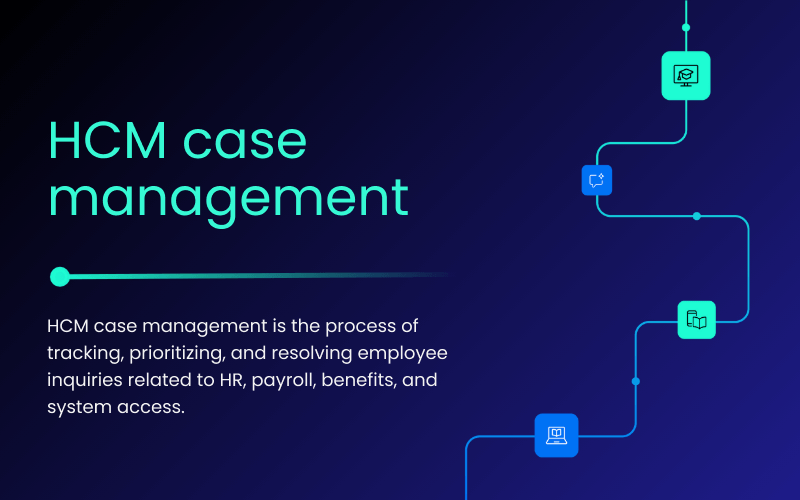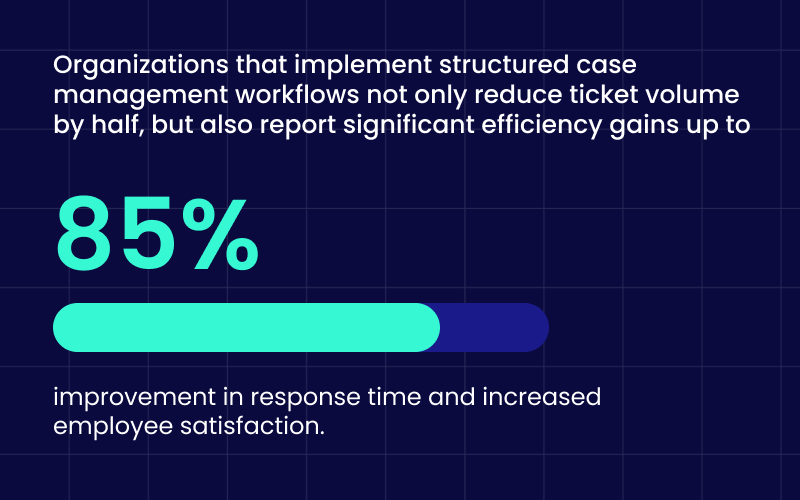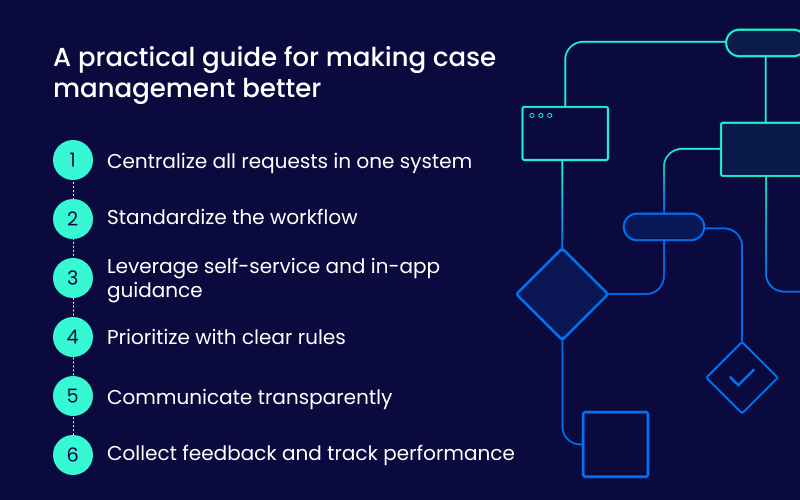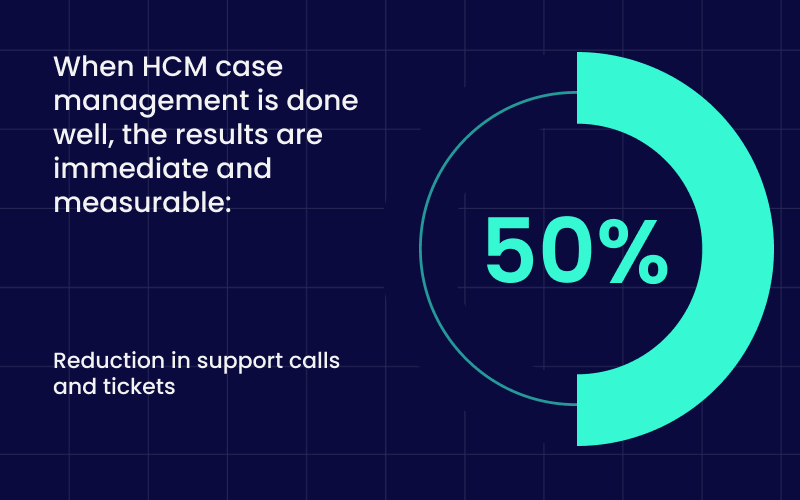When employees have questions about pay, benefits, or policies, they expect quick, clear answers. But for HR teams, handling those inquiries can easily become chaotic. Messages arrive through email, chat, and ticket systems. Priorities shift constantly. Some cases slip through the cracks.
Companies that establish structured case management processes have seen a 50% drop in support calls and tickets, a powerful reminder of how much smoother operations become when requests are tracked, routed, and resolved consistently. For organizations managing large, distributed workforces, that kind of improvement translates directly into better employee experience and lower operational strain.
What is HCM case management?

HCM case management is the process of tracking, prioritizing, and resolving employee inquiries related to HR, payroll, benefits, and system access. It covers a wide range of requests, including:
- Pay or benefits questions
- Profile or personal information updates
- Policy clarifications and service requests
- IT or system access issues tied to HR systems
Each case represents an opportunity to improve trust and transparency between employees and HR. When managed effectively, case management creates accountability, reduces response times, and ensures no issue goes unresolved.
The challenges
Despite its importance, case management is often one of the most fragmented and inefficient HR processes. Without a consistent structure, support requests pile up in multiple channels, emails, spreadsheets, or chat threads, making it nearly impossible to track progress or measure results.
Key challenges include:
- Disorganized case tracking across multiple tools and systems
- Inconsistent resolution methods leading to variable outcomes
- Poor prioritization, where urgent payroll issues are delayed behind routine requests
- Limited communication, leaving employees uncertain about progress
These issues slow down response times, frustrate employees, and increase costs. Traditional approaches rely heavily on manual tracking and memory, leaving little room for analysis or continuous improvement.
The Solution: WalkMe
This is where digital adoption platforms like WalkMe become essential.
Instead of relying on scattered communications or manual checklists, WalkMe enables structured, guided workflows directly within HCM systems. Employees can follow step-by-step instructions, find answers through in-app guidance, and submit requests accurately the first time, reducing repetitive questions and manual errors.
HR teams, in turn, gain visibility into each case’s status and resolution, with real-time analytics that reveal bottlenecks and opportunities for process improvement.
Organizations that implement structured case management workflows not only reduce ticket volume by half, but also report significant efficiency gains up to 85% improvement in response time and increased employee satisfaction.

A practical guide for making case management better

- Centralize all requests in one system
A unified dashboard ensures no inquiry is lost. Centralization provides visibility across teams and creates accountability for every case from start to finish. - Standardize the workflow
Define clear, repeatable steps, intake, investigation, resolution, and closure. Consistency ensures each employee receives the same quality of service. - Leverage self-service and in-app guidance
Knowledge bases and tools like WalkMe empower employees to resolve simple questions on their own. Automated guidance inside HCM systems reduces repetitive tickets and allows HR to focus on complex issues. - Prioritize with clear rules
Set service-level agreements (SLAs) and routing logic to ensure critical requests—like payroll or benefits issues, receive immediate attention. - Communicate transparently
Regular status updates, estimated resolution times, and confirmation messages help reduce uncertainty and build trust. - Collect feedback and track performance
Post-resolution surveys and analytics highlight areas for improvement, allowing HR to refine workflows based on real data.
Putting it all together
Combining these strategies creates a clear, efficient, and measurable case management framework. When implemented with WalkMe, HR teams can monitor trends, identify recurring issues, and continuously improve their processes—all while freeing up time and reducing costs.
Although many organizations recognize the importance of employee support, few have fully optimized their case management systems. WalkMe bridges this gap by streamlining request handling, guiding employees in real time, and ensuring no issue goes unresolved.
What success looks like

When HCM case management is done well, the results are immediate and measurable:
- Support calls and tickets reduced by 50%
- Faster resolution times and higher first-contact success rates
- Consistent, transparent service delivery across all HR functions
- Reduced operational costs through automation and self-service
- Higher employee satisfaction and trust in HR systems
By turning fragmented case handling into a structured, data-driven process, WalkMe empowers HR teams to provide faster, more reliable support, transforming case management from a pain point into a competitive advantage.

